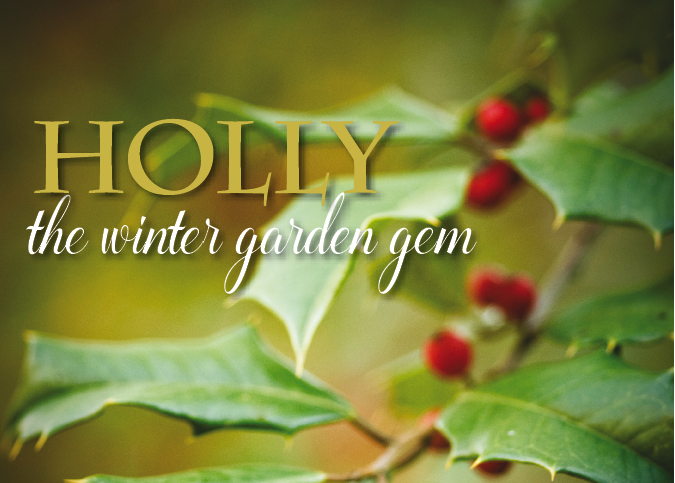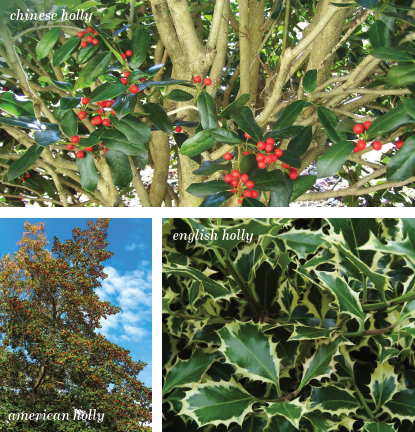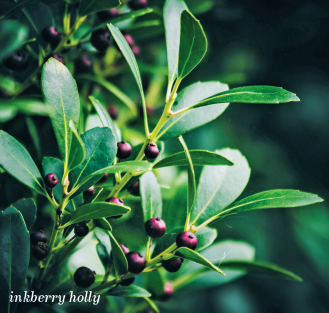Holly The Winter Garden Gem

When winter arrives, unassuming evergreens like hollies take center stage in the garden. With their glossy green leaves and cheerful berries, they stand out in what can otherwise be a muted landscape. If your winter garden feels a bit bare, consider the holly, a classic evergreen for all season.
The holly tree has been a symbol of winter celebrations dating back as far as Ancient Rome. Celtic Druids believed that a Holly King and an Oak King fought a battle for the seasons at Yuletide and midsummer, with each king reigning for half the year. Holly boughs have been used to ward off lightning strikes and witchcraft over the centuries. With its thick, shiny, prickly green leaves offset by brightly-colored winter berries, holly has become the subject of traditional Christmas carols while remaining a practically universal symbol of winter solstice celebrations around the globe.
With close to 400 species, holly trees are native to every continent but Australia and Antarctica. They are primarily an evergreen, although there are a few deciduous varieties. In addition to their distinctive serrated shape and spiny teeth, holly leaves are waxy, helping to prevent water loss—a common characteristic of evergreens. They have smooth, close-grained gray bark, and the wood is often used for making black piano keys and violin pegs, as well as fancy inlays, small furniture and other decorative pieces.
Hollies can be planted as stand-alone specimens or closer together in a row as a privacy hedge. Their berries, a winter food source for birds and other wildlife, are technically not berries, but drupes. Drupes are more commonly known as stone fruits —think peaches and plums—but because of the diminutive size of the holly fruit, they are generally referred to as berries. While we tend to associate red berries with the holly tree, they can come in a variety of colors—orange, yellow, blue, black, purple and white. These fruits have small amounts of toxins in them that are harmful to dogs, cats and humans, so be sure to keep children and pets from ingesting them.
Traditionally, hollies are dioecious, meaning plants are male and female, with the female bearing fruit when a male is planted nearby. (In recent years, some self-pollinating cultivars have been also been developed.) Both male and female hollies produce small, white blossoms in spring, with the berries forming in early to late fall, though it can take several years for berries to form on a young plant. Among the more popular and interesting varieties that do well in our area, here are a few to consider:
English holly
 It is the English holly that is most associated with winter solstice decorations—native to most of Europe, it’s able to adapt to many soils, climates and sunlight levels. It can grow to a height of anywhere from 15 to 50 feet while reaching a diameter of eight to 20 feet. It also comes in a variegated version, with dramatic white margins on the leaves that makes the tree stand out.
It is the English holly that is most associated with winter solstice decorations—native to most of Europe, it’s able to adapt to many soils, climates and sunlight levels. It can grow to a height of anywhere from 15 to 50 feet while reaching a diameter of eight to 20 feet. It also comes in a variegated version, with dramatic white margins on the leaves that makes the tree stand out.
American holly
A native of North America, American holly is so similar in appearance to the English holly that it can be hard to tell them apart. American hollies prefer a slightly acidic soil and grow best in full sun, although they will tolerate light shade. Once established, they are slow growing and low maintenance. They can grow to a full height of 40 to 50 feet when planted as a stand alone specimen tree.
Inkberry holly
The Inkberry holly is native to the American southeast, and doesn’t have the prickly leaves typical of other varieties. Also known as an evergreen winterberry, it produces purple berries and prefers moist soil. There are some cultivars of inkberries  that produce white berries as well. Inkberry hollies reproduce with suckers, so they will require some maintenance to keep from overtaking an area if planted in your garden. They grow four to eight feet tall, and spread to a diameter of four feet.
that produce white berries as well. Inkberry hollies reproduce with suckers, so they will require some maintenance to keep from overtaking an area if planted in your garden. They grow four to eight feet tall, and spread to a diameter of four feet.
Chinese holly
While not native to our area, another popular holly that does well here is the Chinese holly. Chinese hollies have a more rounded leaf shape, typically with one spine on the tip of the leaf. These hollies also prefer full sun and well drained soil, but may need to be protected during cold spells. Chinese hollies will grow to a height of about 20 feet when planted alone.
Sky holly
Sky holly is a Japanese cultivar that resembles a boxwood more than a typical holly. Narrow in shape, it grows to a height of about eight feet while never getting wider than about two feet. It does well in containers and is often used as an architectural accent plant at entryways or in formal gardens.
Planting and care
The best time to plant hollies is in the spring, right before they start growing for the season. They like a moderate amount of water that is usually provided by rainfall, although if there is a drought the first year they are planted, water them weekly. A few inches of mulch, spread as wide as the branches, helps protect the roots from freeze and thaw damage. Fertilize them in the spring and fall as needed. Pruning depends upon the type of holly, but generally it’s best to avoid heavy pruning in winter months, which can spur tender new growth. However, it’s fine to clip a few sprigs for your holiday decorations.
Hollies are relatively easy to care for while adding interest to your year round landscape, although they are probably most appreciated this time of year. As you ponder your spring planting—because let’s face it, most of us gardeners start plotting next year’s garden while still putting this year’s to bed—take a look around your winter garden, and see where a holly might brighten the landscape next year, and in the years to come.






